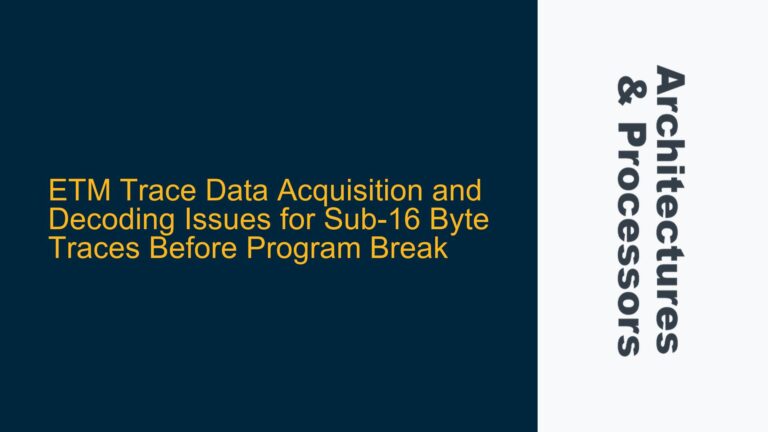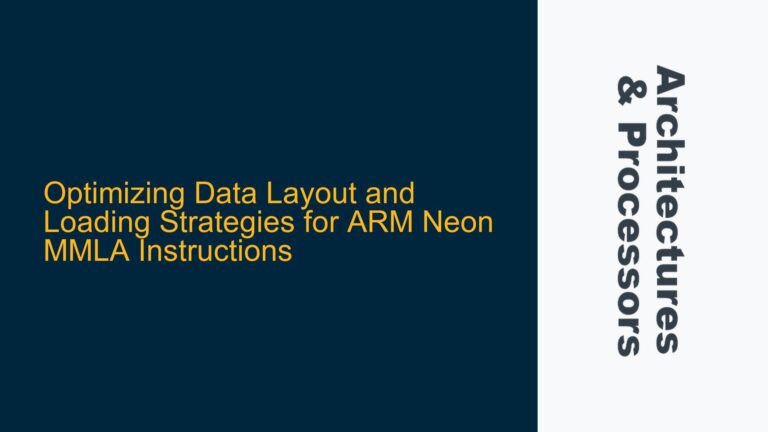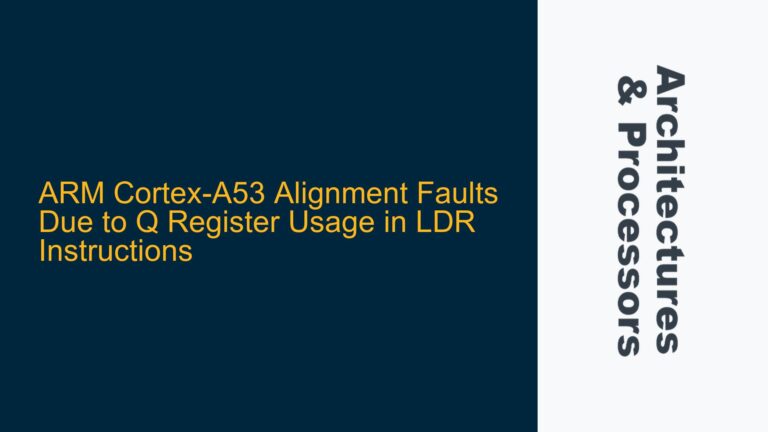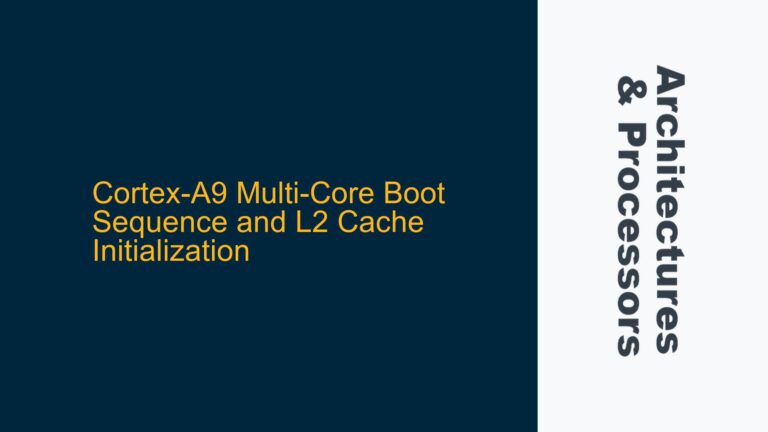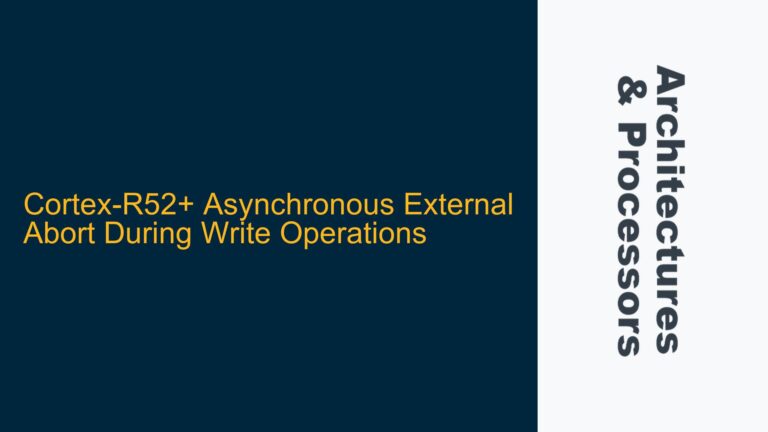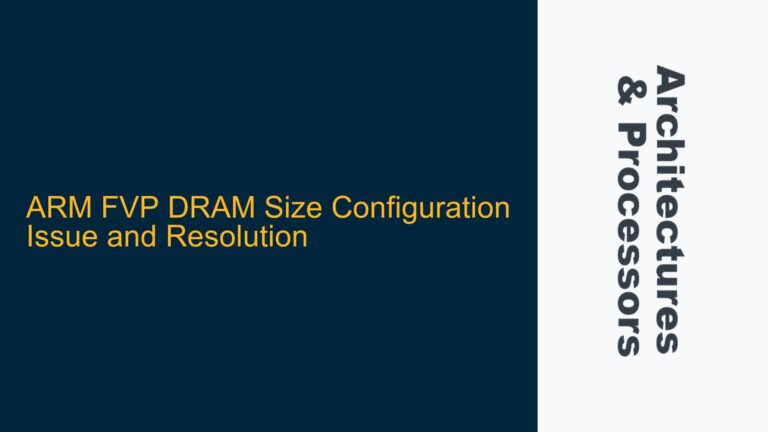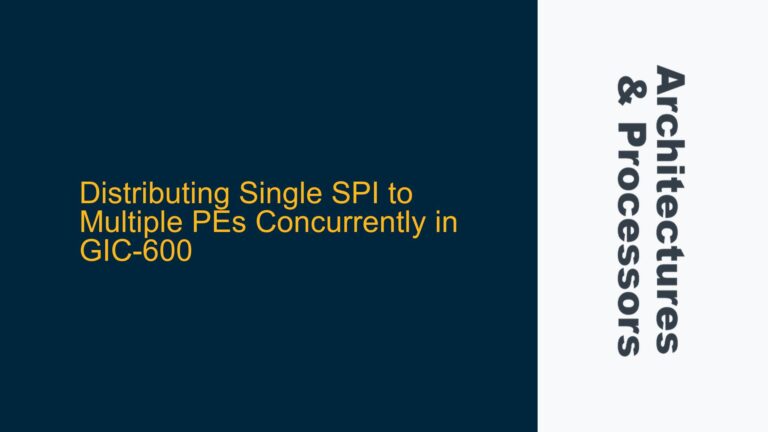ETM Trace Data Acquisition and Decoding Issues for Sub-16 Byte Traces Before Program Break
Understanding ETM Trace Data Flush Behavior in Cortex-M33 The Embedded Trace Macrocell (ETM) in ARM Cortex-M33 processors is a powerful tool for real-time instruction and data tracing, enabling developers to capture and analyze program execution flow. However, a critical issue arises when the trace data generated just before a program break is less than 16…
